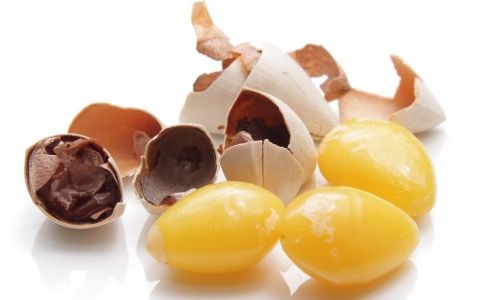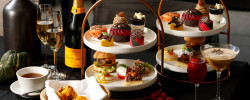
December 20, 2025
Food Fantasies: Japanese Aphrodisiacs
The exotic and erotic foods of Japan to titillate your taste buds, and more
Ever heard of Japanese aphrodisiacs? These love foods are as old as history. Way back in ancient Egyptian times, people consumed wine-soaked lilies to boost sexual performance. Aztec leaders drank melted hot chocolate. The Assyrians bathed in saffron infusions. Oysters, chili, avocado, asparagus, figs, vanilla, nutmeg, basil, duck eggs containing a fetus—the spectrum of aphrodisiacs throughout history is broad. But so are the needs of lust-enhancement.
Key passion-inducing attributes of an aphrodisiac appear to be: an aesthetic resemblance to sexual or reproductive organs, nutritional components with relevant physiological side effects, and a perceived sensual thrill of exoticism. In Japan, such foods or drinks are biyaku. The kanji roughly translating to “flirt medicine.”
FUGU

A meal of improperly prepared fugu would be your last, as this Japanese pufferfish contains enough of the deadly poison tetrodotoxin to kill 30 adults. Shibireru is the Japanese word meaning “to become numb,” and this is the sensation eating fugu induces, a titillating reminder of the inherent dangers.
Not only is fugu deadly, it’s also expensive, and this racey combination of luxury, Russian roulette, and survivors’ post-consumption renewing zest for life has prompted the fugu’s long history of being regarded as one of the most famous Japanese aphrodisiacs.
UNI

This spiny hermaphrodite is notoriously difficult to harvest and labor-intensive to clean, giving the small portions of delicate meat an exotic appeal. The creature’s perceived exoticism; the meat’s tongue-like appearance; sensual custardy consistency; buttery, sweet and slightly briny flavor; high price point; and unavoidable reality that you’re eating a creature’s gonads make it hardly surprising that uni (sea urchin) is an aphrodisiac in Japan for thousands of years. Interestingly, uni also contains high levels of the euphoria-causing anandamide, a cannabinoid similar to THC in marijuana.
EEL

Rich in protein, calcium, and vitamins A and E, unagi (eel) is a powerful “stamina food,” and a popular meal eaten during summer to beat fatigue. These strength and vitality-providing qualities and an evocative phallic appearance have given eel legendary biyaku status in Japan for over 1,000 years. Sometimes, Japanese wives prepare unagi for their husbands, to inspire passion.
YAMAIMO

Yamaimo (mountain yam) is most common in its grated form—tororo—a thick, gooey, sticky white substance smeared across bowls of noodles or rice. A known aphrodisiac since the Edo Period, during which time, people put slices into bathwater to increase men’s virility. Yamaimo has energy-providing properties due to bulk levels of protein, fiber, B vitamins, and minerals: the “eel of the mountains.”
SHIITAKE

Shiitake are famous in Japan for their nutritional and medicinal qualities, used for everything from cancer treatment to strengthening immune systems—and improving libido. Historical documents record that the ancient Japanese court used shiitake mushrooms as an aphrodisiac. Aside from their suggestive shape, characteristic soft, fleshy texture, and juicy center, it is the lentinan in shiitake, thought to boost erectile production, or the zinc, which increases testosterone, that may be responsible for this reputation.
The donko shiitake, produce striking white designs on the top and have an even richer flavor and aroma (with a significantly more expensive price tag). They are a potent aphrodisiac.
GINKGO NUTS

Native to Japan and China, the ginkgo biloba tree is one of the oldest surviving plants in the world. Not only is it resilient, but it’s also thought that the leaves and nuts of the tree are extremely beneficial for improving the body’s circulatory system, increasing blood flow to all the “major organs” of the body.
Its benefits supposedly include stress and tension reduction, lowering inhibitions, and improving mood. These are all important factors for the libido. This has resulted in ginkgo nuts and extracts being a pleasure facilitator for hundreds of years.
CARROTS, GOBO, RENKON


Throughout many cultures, various root vegetables have been common aphrodisiacs. A Japanese proverb says, “A man who likes carrots, likes women.”
Aside from their hard tubular form, carrots are full of vitamin A, a nutrient thought to be essential in the production of sex hormones, sperm production, and in improving lubrication. Gobo (burdock root) is supposedly the favorite food of preeminent samurai Hideyoshi Toyotomi. Rumors say he kept up to 300 concubines.
Gobo is rich in energy-producing nutrients, as well as the amino acid arginine. This is a compound that stimulates blood flow to the organs and is believed to increase sperm count. Studies have shown that women who took a supplement containing arginine experienced increased desire, more frequent orgasms, enhanced stimulation, and increased lubrication.
Thanks to this amorous reputation, bunches of gobo make for popular honeymoon gags. Renkon, or lotus root, is also high in arginine. It is said to have been fed to clients by the yujo, professional women of pleasure in feudal Japan.
Japanese Aphrodisiacs: Dishes to Try
- Fugu Sashimi (Best Fugu restaurants in Japan)
- Tecchiri (Fugu Nabe)
- Uni Gunkan Maki
- Uni Pasta
- Unagi no Kabayaki (or anago, saltwater eel, as unagi is endangered)
- Yamakake Soba
- Tempura Shiitake
- Gingko Nut Yakitori
- Kinpira Gobo
- Renkon Chips
For more articles about food in Japan, start with our Short History of Japanese Cheesecake.
This Japanese aphrodisiacs article was originally published November 15, 2016. Rewritten December 24, 2025.







